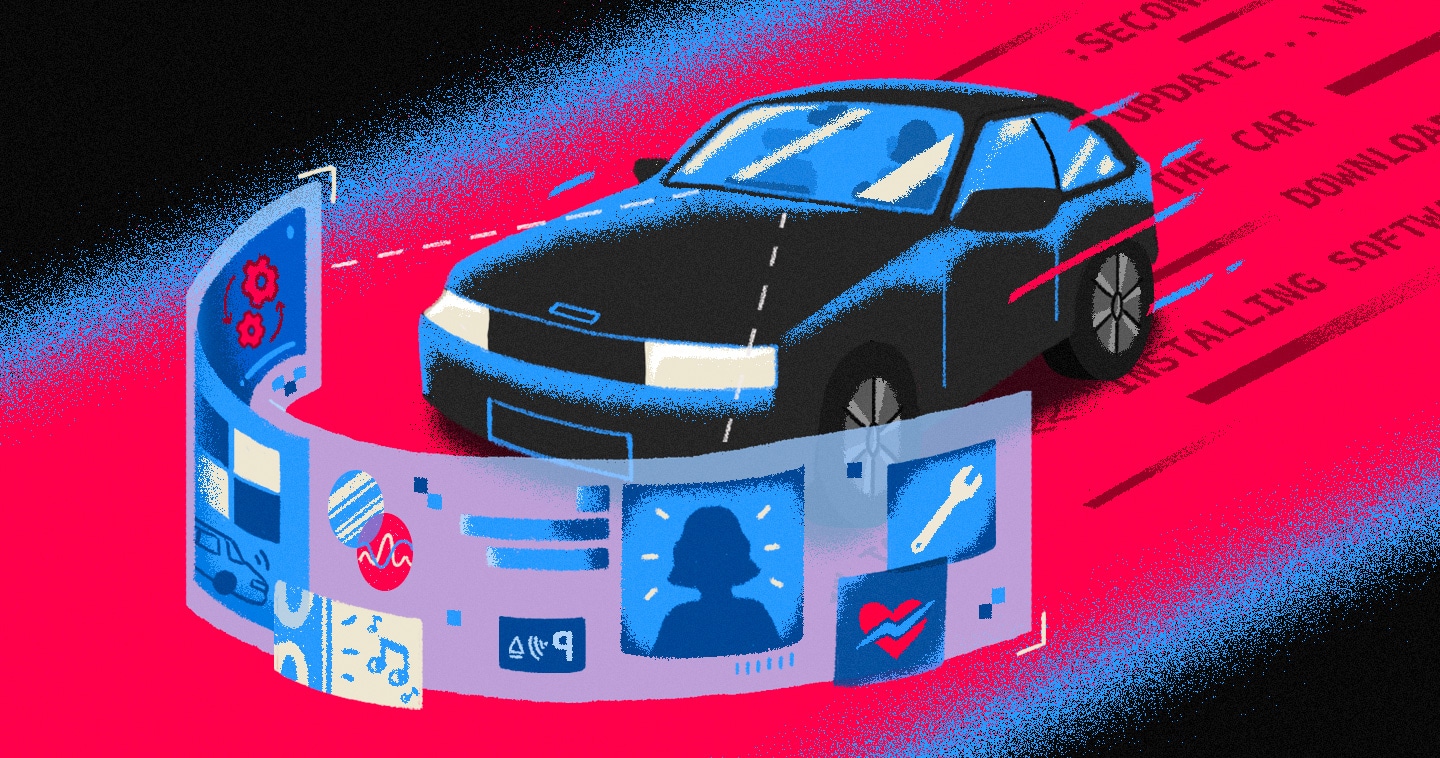Software-Defined Vehicles are Revving Up
As the automotive industry and consumers await fully autonomous vehicles, increasingly software-defined vehicles (SDVs) are evolving. What used to be a mostly mechanical product is becoming progressively more software driven.
An analysis of seven major automakers found that they are each currently allocating 25% to 30% of their R&D budgets to software. This massive amount of software in cars equates to over 150 million lines of code, hundreds of electronic control units (ECUs), and thousands of semiconductors spread throughout a single mid-range vehicle, according to an article in IEEE Spectrum.
“Moving forward, the differentiation for automakers will be about the software,” said Brendon Hutton, managing director at ActiveRep GmbH, who works closely with central Europe’s leading OEMs, tier 1, and tier 2 suppliers as a multi-tier representation company for global semiconductor companies.
Software enabling new services
Software powers today’s safety features, such as lane departure warning systems, dynamic cruise control, and parking assist. As the evolution to fully autonomous driving continues, drivers and passengers alike will experience a more customized journey.
Delivering these innovations has OEMs increasingly hiring tech executives and thousands of software engineers to make these personalized user experience services possible. One source says 40% of a car’s bill of materials (BOM) is for software and semiconductors.
“The OEMs have had to naturally reinvent themselves by taking more software development in-house,” said Hutton.
One such development Hutton sees at a leading European OEM is a more personalized audio experience where each passenger’s seat becomes its own node in the car’s network. A passenger can listen to his/her own podcast within its own “bubble” because there’s active noise cancellation between passengers. In Asia, automakers are making karaoke experiences available to passengers in their entertainment bubbles (disabled while the vehicle is in motion, so the driver is not distracted).
Christopher Mash, vice president of business development at Ethernovia, an early-stage automotive startup focused on next-generation vehicle data networks, agrees with Hutton’s view on the evolving industry. “Before we see high levels of autonomy, there will be high levels of customization, changing everything to be personalized for the individual driver or passenger,” said Mash.
Along with this shift to software and customized experiences, the automotive industry is undergoing a profound change in how cars are maintained. Analogous to the evolution from flip phones to smartphones, cars are evolving from a final product with set features to being more like IoT devices, receiving continuous updates via subscription services.
“It used to be that when you bought a car off the lot, its functionality would essentially be the same for the life of the car,” said Russell Ruben, director of automotive marketing at Western Digital. “But with a move to more software delivered over-the-air (OTA), a car can continue to evolve and improve. That’s the direction where connected cars want to go.”
ECU consolidation, shifting to centralized, shared computing
To deliver these updates, software-defined vehicles need to be built on a flexible architecture. Whereas in the past, software and storage in systems such as navigation were separate from other systems in the car, the trend toward a more centralized computing model is unfolding. Today, automakers are grouping similar activities using shared resources.
One example of this is an enhanced digital cockpit that combines navigation, instrument cluster, and telematics. Combining these adjacent systems into domains reduces complexity and the number of ECUs.
A High-Performance Centralized Computing (HPCC) architecture will better share resources such as ECUs and the storage within, thus reducing wiring and the number of components used.
HPCC architectures pool together resources that can be allocated as needed. For storage, this means eliminating multiple copies of the same data used across multiple systems. One example is traffic data feeding into different systems, such as navigation and autonomous drive.
“The goal is for the overall architecture of the car to reduce the number of processors being used throughout the vehicle,” said Ruben. “High-performance centralized computing takes that to the next level, which helps enable the software-defined vehicle.”
Ethernovia is enabling this next generation of software-defined vehicles by replacing legacy data cables with an Ethernet-based network that carries data throughout the car.
Mash explains that traditional car wiring is the third heaviest and most expensive component after the chassis and the engine. Ethernovia simplifies the architecture by reducing the volume of wires throughout the vehicle and replacing them with centralized compute. This ability to route data from anywhere in the vehicle to any ECU is a key enabler of the software-defined vehicle.
“Ethernovia provides ‘the nervous system’ of the vehicle. We don’t create or compute the data, but no matter where it’s generated in the vehicle, we carry that data around the network,” said Mash.
Standards for the ecosystem
As this new ecosystem evolves, it’s important that the industry follows common standards for building the systems that make up increasingly software-defined vehicles.
“As more electronics go into the car, there are a lot of safety and security features that automakers need to ensure passengers are always safe, no hackers can get in, and no false alarms,” said Srinivas CK, director of quality assurance at Western Digital, who was on the team that achieved ASPICE certification for Western Digital’s automotive storage devices. “That is why autonomous vehicle segments started to look for standards.”
Standards are also important because so many different vendors (OEMs, tier 1s, tier 2s) are combined to build a vehicle. “If you’re going to have technology innovation, it’s got to be multi-source,” said Hutton.
As OTA software updates are delivered to connected cars, imagine the importance of adhering to security standards so that hackers cannot interfere.
“Automobiles cannot fail,” concludes CK. “They need to be reliable. Customers expect more stringent processes. We ask the same of our suppliers.”
As the automotive ecosystem works together to deliver the next generations of vehicles, software-defined vehicles, starting with increased customization, are cruising toward full autonomy.
Cars are evolving into micro data centers. And as technologies advance, our cars will also transform into living rooms on wheels. There’s no doubt universal standards will be along for the ride.
Artwork by Rachel Garcera




